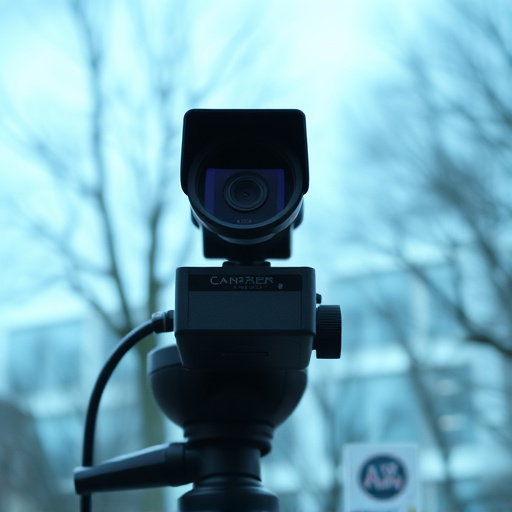Undetectable wireless security cameras offer discreet, flexible surveillance by eliminating cabling and transmitting high-quality video data wirelessly. Strategically placed in everyday objects like decorative items or hidden in plain sight, they maintain optimal video capture without compromising aesthetics. DIY enthusiasts can use them for robust home security while blending advanced technology with camouflage design. Legal and ethical considerations regarding consent, privacy rights, and responsible data handling are crucial when deploying these cameras, especially in varying jurisdictions like Europe's GDPR.
“Uncover the art of secure surveillance with our comprehensive guide on security camera concealment. In today’s tech-driven world, undetectable wireless security cameras offer unparalleled peace of mind. We explore cutting-edge wireless technology and its role in discreet placement strategies. From DIY enthusiasts to professionals, learn advanced techniques to seamlessly integrate cameras into your surroundings. Delve into legal considerations and discover ethical use cases that respect privacy while enhancing security measures.”
- Understanding Wireless Camera Technology
- Choosing Discreet Placement Strategies
- Advanced Concealment Techniques for DIYers
- Legal Considerations and Ethical Use Cases
Understanding Wireless Camera Technology
Wireless security cameras have transformed home and business surveillance, offering unparalleled convenience and flexibility. Unlike traditional wired systems, undetectable wireless cameras eliminate the need for messy cabling, making them an attractive option for discreet monitoring. These devices transmit video data wirelessly to a receiver or recording device, allowing for real-time viewing and remote access via internet connections.
The technology behind undetectable wireless security cameras involves advanced radio frequency (RF) or Wi-Fi signals that enable seamless data transfer. Modern systems employ encryption protocols to ensure secure transmission, protecting footage from unauthorized access. By integrating compact camera modules with robust wireless communication chips, these devices can be hidden almost anywhere while maintaining high-quality video capture.
Choosing Discreet Placement Strategies
When concealing security cameras, strategic placement is key. One effective method is to take advantage of everyday objects and furniture that blend seamlessly with their surroundings. For instance, mounting a camera inside a decorative lamp or placing it behind a painting can make it nearly impossible for an untrained eye to spot. This approach leverages the natural elements in a room, ensuring maximum discretion.
Undetectable wireless security cameras offer a further advantage by eliminating the need for unsightly cables. These innovative devices can be strategically placed in corners, behind shelves, or even within everyday gadgets like smoke detectors or clock radios. By utilizing these discreet placement strategies, homeowners and businesses can maintain a high level of security without compromising aesthetics.
Advanced Concealment Techniques for DIYers
For DIY enthusiasts looking to enhance home security, undetectable wireless security cameras offer a compelling solution. These innovative devices combine advanced technology with discreet design, allowing them to blend seamlessly into their surroundings. One popular technique involves integrating cameras into everyday objects like fake rocks or plant pots, making them virtually invisible to the untrained eye.
Another method is to utilize magnetic mounts and hidden wiring, enabling cameras to be placed on metal surfaces without leaving visible traces. Additionally, smart positioning and strategic lighting can help camouflage these devices further. By employing these advanced concealment techniques, DIYers can enjoy peace of mind knowing their homes are protected while maintaining an aesthetically pleasing environment.
Legal Considerations and Ethical Use Cases
When deploying security cameras, understanding legal considerations is paramount. Different jurisdictions have varying regulations on surveillance and privacy rights, with many countries mandating explicit consent for filming public or private spaces. For instance, in Europe, the General Data Protection Regulation (GDPR) dictates that personal data, including images captured by cameras, must be handled responsibly and transparently. This often involves informing individuals about the presence of cameras and the purpose of surveillance.
Ethical use cases extend beyond legal obligations. Installing undetectable wireless security cameras, like those designed to blend into their surroundings or operate discreetly, raises ethical questions. While these cameras can offer enhanced security, they may also infringe on privacy rights if not used judiciously. It’s crucial for property owners and businesses to balance the need for safety with respect for individual privacy, ensuring that any hidden surveillance is justified, proportionate, and compliant with relevant laws and ethical standards.
Undetectable wireless security cameras offer a blend of advanced technology, thoughtful placement, and creative concealment methods. By understanding how these cameras work and employing discreet strategies, you can enhance home or business security while maintaining an aesthetic appeal. From choosing the right placement to exploring DIY advanced techniques, this guide has equipped you with practical knowledge. Always remember to use such technologies ethically and within legal boundaries, ensuring privacy and respect for others. With these effective methods, stay one step ahead of potential risks and keep your spaces secure without compromising their look.
